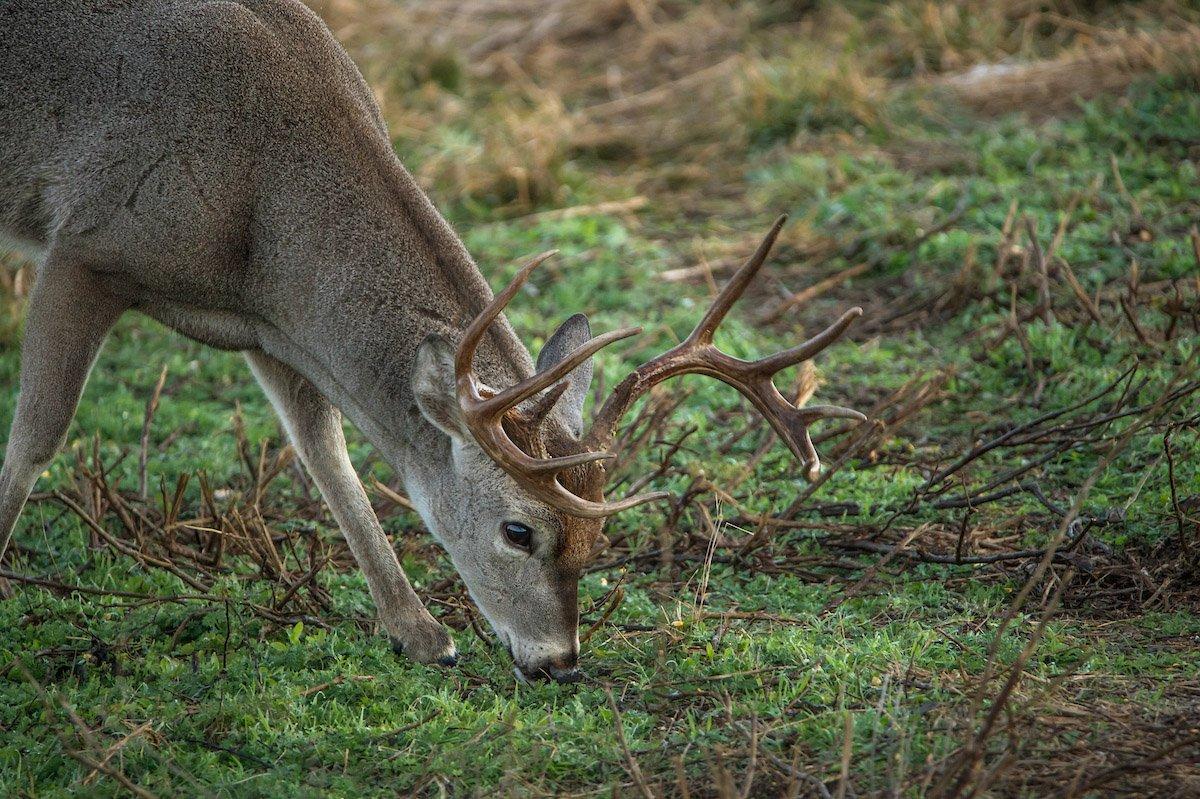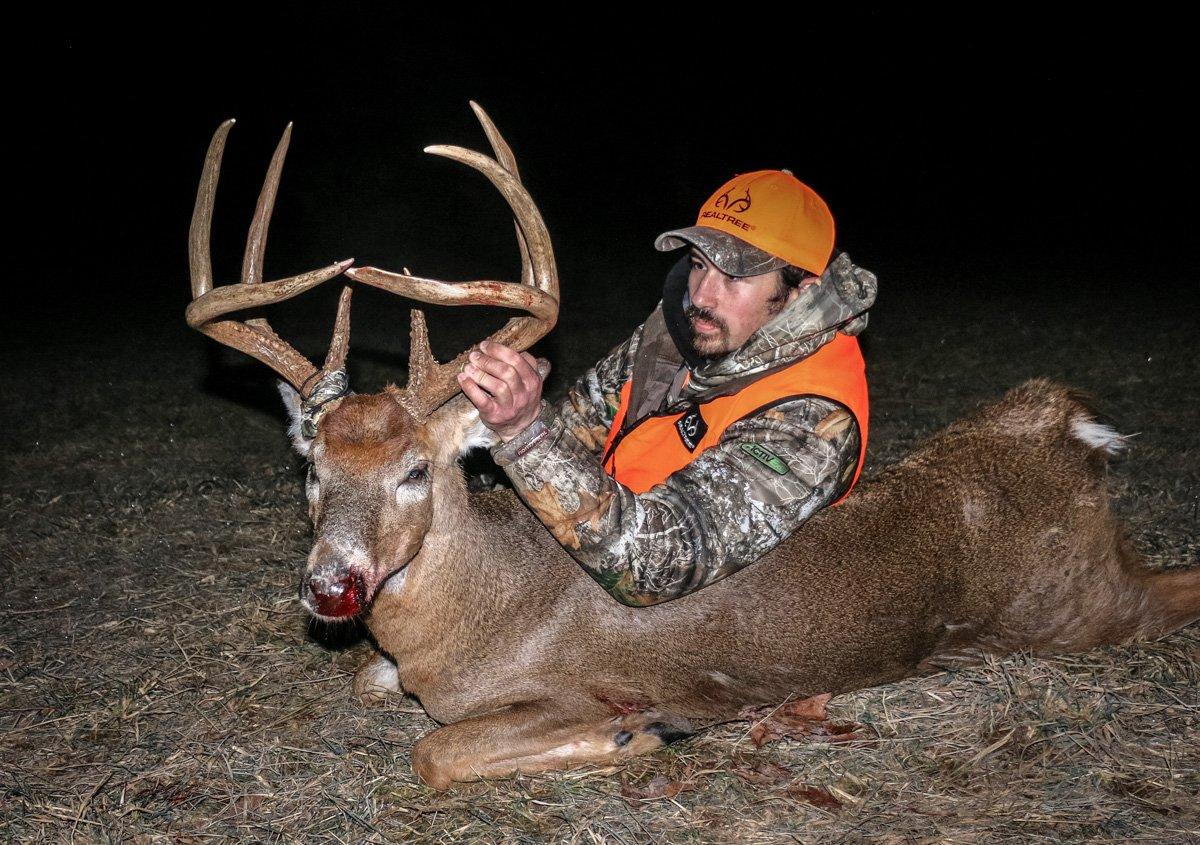Not every late-season sit is textbook cold and snowy. Here's how to adapt when the conditions aren't good
Christmas is long gone. The Super Bowl is almost here. And the Kardashians are already modeling 2020 swimsuits on Instagram. (Don't ask me how I know that.) If that doesn't light a raging fire in you to fill that buck tag, nothing will. Problem is, it's another warm winter, and most of the late-season advice out there assumes that it will be cold. But for those hunters who are hungry and willing to make it work, we've still got a late-season, beach-weather game plan.
Dress for It
It's January going on July. Deer aren't burning many calories to stay warm right now. The sun is doing that for them. As such, you don't need the typical late-season attire to stay warm.
I'll be the first to admit I often overdress on warm, late-season days. It's winter, so my mind automatically goes to the heavy end of my closet. That's a mistake. The last thing you should do is sweat it up because that makes it a lot easier for a buck to wind you, especially right now. Humid, warm air makes for ideal scenting conditions. Don't break a heavy sweat. Pack extra layers in with you if necessary, but don't put them on until you're in the stand or blind.
Wait for It
Late-season daylight action doesn't just hinge on cold weather. In fact, a sudden warm-up after days of monotonous cold can actually spark a flurry of movement. But if it's been consistently warm for days, it might pay to focus on morning hunts. I don't normally encourage that during the late season, but dawn generally produces the lowest temperatures of the day, and deer respond to that.
Temperature aside, four other conditions can help get deer on their feet: incoming storm fronts, sudden rain events, a rising barometric pressure of around 30, and when the moon overhead or underfoot aligns with dawn and dusk. One of these can put a big buck in front of you during legal shooting hours, but if you catch two or more, get your butt in a stand. Your target deer is about to move.
Know What They Need
When it's warm, I've had better late-season hunts over (or near) green food sources like alfalfa, clover, brassicas, and cereal grains than over corn or soybeans. Remaining green browse and soft mast is attractive, too. Find whatever food is most limited. Like humans, deer naturally want what they can't have. Targeting food sources in short supply can really up the odds. Finding remaining hard mast such as acorns and beech nuts will put you in the chips, too, especially if they're near a staging area deer use during daylight.
In states where it's legal, hunt over active mineral sites. My trail cameras have proven (at least to me) that deer use wintertime mineral licks more during warmer spells. Their sudden intake of green foods disrupts the digestive system, and minerals help remedy that. Water is also important, and shouldn't be overlooked. Deer drink multiple times per day.
Hail Mary Time
If setting up closer to food or water doesn't produce daylight sightings, call an audible. Deer usually don't move as far when it's warm, so slide in closer to the bedding area. I'm not talking about the 20 measly yards you pushed in a week or two ago. I'm talking about real home invasion. Get in that buck's bedroom and wait for him at the footboard.
You can do this in a few ways. First, get in there three or four hours before daylight. Wait for the buck to come back and stick him in his bed after the sun rises. Or, wait until after sunrise and still hunt your way through the bedroom. Take four or five hours to ease your way in. Then, when you find the magical spot, camp out on the ground and kill that buck as it saunters to the dinner table. You might even consider still-hunting the entire day, carefully working through prime bedding habitat. It's painstakingly slow work but if you have a sharp eye and light foot, it might result in the buck of a lifetime.
Fourth, do a good, old-fashioned deer drive. Methodically (and safely) push through bedding areas to pull deer out in the open.
Game Plan in Action
I killed a buck in Ohio a couple weeks ago, and a lot of this advice came into play. I waited until the late muzzleloader season to move in on a buck we called Buckets (I don't usually name deer, but this one was fitting). He was one of several good bucks we chased on an 80-acre lease. To that point the deer had kicked our teeth in — but we got even with them. My buddy and I tagged two great bucks in three days.
The magical day was January 6, which was the third day of the four-day season. It was 47 degrees with a southwest wind and sucky moon positioning. Not what you hope for during the Ohio late season. Really, the only condition in our favor, on paper at least, was a rising barometric pressure.
But despite it all, deer still moved. We'd had cool temperatures a couple days before, and pretty cold temps were coming later that night, too. There's your change. Plus, a deer does what it wants, and he felt comfortable doing it during daylight because we hadn't pressured him. Before that, we had hunted him three days in mid-October and two days in early November. That was it. We let neighboring hunting pressure push deer into our area and waited until we thought the time was right. I'd hoped for better conditions, but the clock was running out.
Buckets was on a pretty good pattern, so we had that in our favor. The area has two big ridges opposite of one another. Brushy benches sprawl out below each ridge, and a wooded ravine and green field separate them. We set up in a blind in the green field, looking straight up the ravine's gut.
He usually passed by that spot through the lowest point where the ravine and green field meet — a winding advantage for him — every day and a half, but it'd been more than two since he'd last passed by that camera. He was overdue. I believe that, paired with slight wind, a rising barometric pressure, and the lack of human intrusion encouraged him (and other deer) to feed during daylight. He marched right down off the mountain and out into the green field I was camped out in. That's where I shot him.
The moral of the story is to not give up if conditions aren't perfect. You can kill late-season bucks on warm days. Look for slight advantages, listen to your gut, and move in when you feel it's time.
Don't Miss: The Ultimate Late-Season Trail Camera Plan
Check out more stories, videos and educational how-to's on deer hunting.








